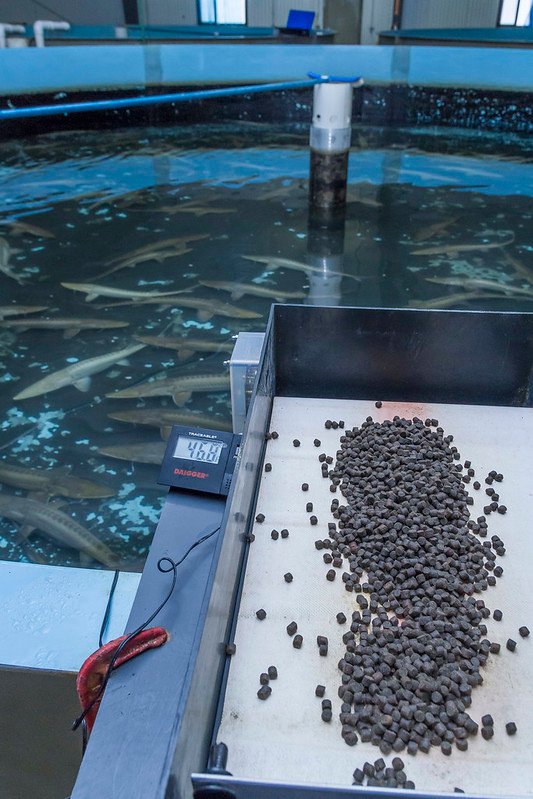Eindhoven, the Netherlands – Signify (Euronext: LIGHT), the world leader in lighting, has launched new Philips solar fish grow lights that help to optimize farming for ponds, while harnessing the power of the sun.
It provides spectral light specifically designed to suit many fish species, including tilapia. The grow lights enable fish farmers to increase fish productivity and efficiency. Research by the South China Agricultural University in a commercial size trial at a tilapia farm using 60 solar luminaires in a 7,000 m2 pond confirmed a 10% increase in fish growth and a 10% reduction in feed conversion ratio (FCR), meaning that fish farmers need less feed per kilogram of fish.
Based on an earlier study in cooperation with the Ocean University of Shanghai1 , which showed similar results, South China Agricultural University started the trial in a live setting. This new trial, done at the tilapia farm in Taishan, Jiangmen, Guangdong in the south of China, proved the impact of the new solar fish lights, confirmed a 10% improved growth and found a positive effect on water quality. The commercial size trial lasted 117 days and resulted in an additional 1,770 kg of tilapia that was harvested compared to the reference ponds.
“It was very good to see that the results we obtained in the laboratory test in Shanghai could be repeated in an actual farming situation in the south of China. This is a breakthrough in tilapia farming efficiency improvements.” Remco Lansbergen, General Manager Aquaculture at Signify
The Philips solar fish light is easy to install and only one luminaire is needed per 100-150 m2 of pond surface. The luminaires, equally spaced in the pond, are attached by rope to the center line or to each other to keep them in place. The best operation is achieved with clean solar panels and LED unit.
Light impact on fish is complex and there are multiple elements to consider: intensity and distribution, quality of light expressed in spectral composition, and photoperiod undergoing daily and seasonal cycles. Signify’s Aquaculture lighting team is committed to push the boundaries of lighting applications supporting the needs of fish farmers and their hatchery and grow-out sites either on land or offshore. Fish lighting is developed in close collaboration with leading universities and institutes and produced with the finest marine grade materials ensuring durability under the toughest conditions. Light has proven to be a powerful tool for enhancing fish production, while protecting its welfare.
Stay Always Informed
Join our communities to instantly receive the most important news, reports, and analysis from the aquaculture industry.
Supporting food availability through aquaculture LEDs illustrates our commitment to supporting good health and wellbeing (SDG3) and is key to our commitment to doubling the percentage of our revenues for brighter lives, which benefit society, to 32%, as part of our Brighter Lives, Better World 2025 program, which we launched in September 2020.
Reference (open reference):
Kui Wang, Kang Li, Liping Liu, Cristina Tanase, Rainier Mols, Michiel van der Meer. Effects of light intensity and photoperiod on the growth and stress response of juvenile Nile tilapia (Oreochromis niloticus) in a recirculating aquaculture system. Aquaculture and Fisheries, 2020, ISSN 2468-550X,
https://doi.org/10.1016/j.aaf.2020.03.001.
Editor at the digital magazine AquaHoy. He holds a degree in Aquaculture Biology from the National University of Santa (UNS) and a Master’s degree in Science and Innovation Management from the Polytechnic University of Valencia, with postgraduate diplomas in Business Innovation and Innovation Management. He possesses extensive experience in the aquaculture and fisheries sector, having led the Fisheries Innovation Unit of the National Program for Innovation in Fisheries and Aquaculture (PNIPA). He has served as a senior consultant in technology watch, an innovation project formulator and advisor, and a lecturer at UNS. He is a member of the Peruvian College of Biologists and was recognized by the World Aquaculture Society (WAS) in 2016 for his contribution to aquaculture.




